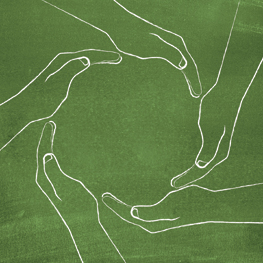
When it comes to learning new skills, children on the autism spectrum need more opportunities to learn and engage. One of the best ways to do that is by involving other important people in the child’s life - parents, grandparents, siblings and other caregivers - and incorporating their skills and interests into the natural rhythms of a child’s day. With a ‘strength-based approach,’ meaning the practice or strategy in identifying and drawing upon the strength and interests of an individual, their family and community to achieve engagement and results as a partner, families can achieve an established goal set out for a child with autism.
By focusing on activities that family members already enjoy and naturally gravitate toward, it increases the likelihood that the important skills you are hoping to achieve will be addressed. For example, if the son’s grandma loves to bake and sees the child once or twice per week, during their time together, grandma can help the son with a baking project (something she loves) so that he can get experience in social communication skills (something he needs).
The benefits of this approach include:
• Using authentic materials in the context of familiar environments.
• Capitalizing on naturally occurring consequences.
• Increasing a child’s exposure to opportunities and approaches.
• Maintaining and developing functional skills used across different settings.
Follow these steps to create a plan that works for your child’s needs as well as family members:
Start with a list of the child’s needs
The process starts with the child’s needs. First, gather together a list of their specific needs in development, based on their Individualized Education Program (IEP) or standardized assessment tools.
Write down the specific skills they’ll need to practice, which may include:
• Language and communication (e.g. touching a person to get attention; pointing to items when requested)
• Fine motor skills (e.g. using scissors; turning dials)
• Gross motor skills (e.g. walking up and down stairs)
• Adaptive skills (e.g. using silverware; dressing and undressing)
• Social communication skills (e.g. following multiple-step directions)
• Cognitive skills (e.g. retelling an event in sequence)
• Social skills (e.g. working cooperatively in a small group)
Identify the interests of family members and caregivers
Make a list of the people involved and their skill sets and interests. For example, a cousin may be a talented musician and willing to work with the child once a month on rhythm and music games. A baby-sitter may be a part-time gymnastics instructor and can assist with physical coordination development. Anyone that takes interest in or has an active caretaking role with the child should be considered.
Create a skills matrix to match personal interests to skill instruction
Use the lists you’ve created to develop a matrix. An example is show below. The matrix will display the individuals that will spend time with the child, their skills and interests, and how each of those interests ties into the assessment-driven goals and objectives.
|
Skills Matrix |
|||||||
|
Support Person |
Interests |
Activity |
Fine Motor |
Gross Motor |
Language |
Social |
Adaptive |
|
Nana |
Cooking Kayaking |
Baking River Trip |
Cut dough with scissors Adjust straps on life vest |
Use rolling pin Paddle kayak |
Request more dough to cut
Label items on the shore |
Bring baked goods to people Greet other boaters |
Wash hands Clear boat, return paddles and vests |
|
Dad |
Hiking Model airplane flying |
Nature walk Trip to the airfield |
Pick up acorns Lower landing gear on plane |
Step up on rocks Run to retrieve plane after landing |
Request trail mix Request to fly and handle controls |
Talk to other hikers Comment about other’s airplanes |
Use public restroom Dress for flying |
With the matrix in hand, you can reach out to the aunt that rides horses or the sibling who loves to design board games and ask for their assistance in developing a specific skill. It gives everyone a choice, and a level of control, on a child’s activities and how they spend time with that child.
It’s important to lay down expectations with the family members and caregivers. Explain to them how their natural talents and interests can help the child, but keep expectations within line with personal capacity. You don’t want to overwhelm the caregiver with extra responsibilities. Emphasize that by doing their favorite things with the child, it will help them develop their skills and have new opportunities.
Keep in mind that a matrix isn’t static. It creates a good starting point for maximizing experiences for a child and getting others involved in positive, constructive ways. However, regular updates and fine-tuning may be needed to avoid boredom, emphasize different skills or accommodate changes. It can take 40 days to form a habit, so give yourself, the family members and the child enough time to adjust and make changes as you see fit.
Family members often feel powerless and like they are relying on professionals to guide their child in their skills development. With this approach, the whole family - related or not - can get involved. It gives them the tools to be empowered and help with a child’s development, without demanding that they reach too far outside of their comfort zone.
Dr. Michael J. Cameron, a Board Certified Behavior Analyst®, is the Chief Clinical Officer for Pacific Child and Family Associates (PCFA) and experienced in the area of behavioral medicine, behavioral health assessment, intervention for diverse populations and higher education. Dr. Cameron earned a master’s degree in applied behavior analysis and a Ph.D. in experimental psychology from Northeastern University.
Calgary’s Child Magazine © 2024 Calgary’s Child